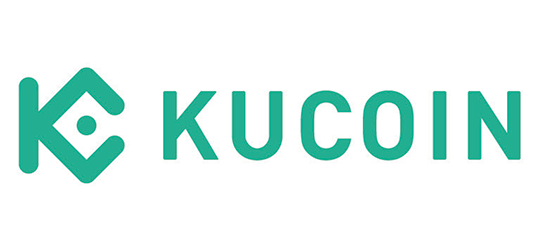
What Is DePIN in Crypto?
DePIN, an acronym for "decentralized physical infrastructure networks," represents a growing trend in the use of blockchain and decentralized technologies. In this article we'll explore this relatively new concept in the blockchain sphere.
What Is DePIN in Crypto?
DePIN, an acronym for "decentralized physical infrastructure networks," represents a growing trend in the use of blockchain and decentralized technologies. It involves applying these technologies to the management and operation of physical systems and infrastructure. As a fresh approach within the blockchain and cryptocurrency sphere, DePIN combines the digital strengths of blockchain with tangible infrastructure, aiming to transform industries traditionally dominated by centralized authorities.
At its core, DePIN operates as a peer-to-peer (P2P) network where participants contribute physical assets such as data storage, wireless connectivity, sensors, or energy grids. In exchange, they receive rewards based on the network's incentive structure. DePIN platforms enable decentralized sharing and management of both hardware and software resources among users, enhancing computing infrastructure areas like storage, processing power, AI services, and media streaming. The advantages of using DePIN platforms include remarkable scalability, cost efficiency, and a diverse array of services.
Decentralized Alternative to Conventional Systems
A familiar centralized model is the ride-sharing service exemplified by Uber. In this model, drivers provide physical resources (vehicles) and services (driving), earning payments while the platform broadens access to these services for a large user base. Such centralized systems attract providers with monetary rewards or other incentives like increased visibility, retaining control over the providers’ resources while they are active on the platform. Providers and users alike must follow specific procedures to join these platforms.
In contrast, DePIN represents a decentralized alternative to these conventional systems. Pioneering projects like Power Ledger and OpenBazaar have showcased the potential of blockchain to decentralize sectors such as energy distribution and e-commerce. Power Ledger has enabled individuals to trade surplus energy directly with one another, promoting a more efficient and sustainable energy network. Similarly, OpenBazaar has allowed direct interactions between buyers and sellers, cutting out intermediaries from online transactions. As this concept continues to attract interest, new initiatives are broadening the applications of DePIN across various fields.
DePIN in Numbers
The market capitalization of DePIN has reached over $32 billion. Furthermore, it has now exceeded the market cap of Decentralized Exchange (DEX) tokens. The DePIN sector stands out as one of the most profitable and robust segments in the blockchain industry. Messari reports that it currently brings in more than $1.5 trillion in annual on-chain revenues. The total market value of the sector is anticipated to hit at least $3.5 trillion by 2028. Additionally, Messari forecasts that DePIN could add $10 trillion to the global GDP in the next decade, with the potential to escalate to $100 trillion in the following decade.
How Does DePIN Work?
DePIN platforms typically categorize users into two main groups: resource providers and resource consumers. Resource providers offer their computing power, storage capabilities, or other hardware/software resources to the network and are compensated with cryptocurrency tokens. On the other hand, resource consumers pay to use these resources, accessing them through the decentralized network on a flexible, pay-as-you-go basis.
The reward system, which distributes crypto tokens to resource providers, creates strong incentives for individuals and organizations, including corporations and startups, to increase their resource capacities and enhance their service offerings on the network. This expansion is a critical growth driver for industries that utilize DePIN platforms.
For consumers, DePIN networks provide an economical, adaptable, and diverse means of accessing computing resources, which might otherwise be costly or complex to obtain.
DePINs fall into two main categories:
Physical Resource Networks (PRNs) and Digital Resource Networks (DRNs).
PRNs are geographically-centered networks where providers offer physical resources related to areas such as connectivity, mobility, and energy. These resources are specific to certain locations and non-fungible, meaning they are tied to particular places and often immovable.
DRNs consist of providers who offer fungible digital resources such as computing power, shared bandwidth, or storage capacity. These resources are not linked to any specific location or dependent on geographical data.
Examples of DePIN
Here's a concise overview of some leading DePIN projects:
Filecoin, launched in 2014, is one of the earliest DePIN projects. It serves as a blockchain-based alternative to traditional centralized cloud storage, like Google Cloud. Filecoin offers competitive pricing through its decentralized marketplace and small, independent providers. Users benefit from the ability to switch between providers easily since they offer similar services and APIs. Additionally, the entry barriers for becoming a provider on Filecoin are significantly lower compared to Google Cloud.
Helium has utilized blockchain to establish a decentralized wireless network that compensates individuals for providing coverage and connectivity. This network includes subnetworks for both LoRaWAN and 5G, enabling widespread wireless access.
Render Network employs a decentralized GPU processing framework to deliver near real-time rendering services, addressing the increasing demand for GPU power in 3D rendering tasks. Render aims to speed up rendering times, reduce costs, and scale effectively by tapping into idle GPU resources and compensating contributors with RNDR tokens.
Final Words
To summarize, Decentralized Physical Infrastructure Networks (DePIN) mark a significant transformation in how physical infrastructure is deployed and maintained. Utilizing blockchain technology and cryptoeconomic protocols, DePINs offer a more efficient, decentralized, and fair method for infrastructure development.
DePINs provide an alternative to centralized, subscription-based models like cloud storage and computing, which are dominated by TradFi corporations such as Microsoft and Amazon with a combined market capitalization exceeding $5 trillion. In contrast, the cryptocurrency-based DePIN infrastructure still has considerable room for growth.
DePIN is more than just a trendy term; it holds substantial potential to design, construct, and manage infrastructure in a scalable and efficient manner. Furthermore, many underutilized physical infrastructures stand to gain from this technological integration. With these advantages, the prospects for DePIN appear very promising.


























